Learn about crystallography through watching
Below are listed some interesting video clips, webcasts, television programmes and films that explain crystallography. Click on the large images to download a video file, watch the clip, or be directed to an external website. Click on the smaller images for more information.
A selection of videos from the International Year of Crystallography playlist on YouTube
The importance of crystallography in our daily lives
PANalytical attended the IYCr2014 opening ceremony on 20th -- 21st January 2014, at the UNESCO building in Paris, France, with a lecture on 'The importance of crystallography in our daily lives' held by Martijn Fransen, product marketing manager X-ray diffraction. In this presentation, Martijn Fransen explains how crystallography is essential for products in our daily lives, such as food, water, cell phones, airplanes and pharmaceuticals. The company's ongoing support of IYCr2014 includes the organization of a number of educational Open Lab events worldwide - consisting of schools and workshops on crystallography, aiming to raise awareness and understanding of this powerful science, responsible for 29 Nobel Prizes.
Category: Science & Technology. Duration: 13m 50s
Licence: Standard YouTube Licence
The Royal Institution Crystallography Collection
Tales from the Prep Room: Diffraction
Andrew Marmery of the Royal Institution in London (where Sir W. L. Bragg was Director) demonstrates the principles of diffraction with a laser pen and some bent wire. With a little ingenuity, the characteristic diffraction pattern of the helical structure of DNA is reproduced.
Published: 2011
Filmed: 2011. Duration: 5m 51s
Credits:StoryCog
The Mystery of the Giant Crystals
![[Inside the Naica cave]](https://www.iycr2014.org/__data/assets/image/0006/102849/Poster-del-Misterio-en-ingles.jpg) The film El Misterio de los Cristales Gigantes (The Mystery of the Giant Crystals) has been made freely available by Madrid Scientific Films and Triana Sci & Tech with the support of the International Union of Crystallography as an educational contribution to the International Year of Crystallography 2014. Written and presented by Juan Manuel García Ruiz and directed by Javier Trueba, the film tells the story of the scientific investigation into the nature and properties of the giant gypsum crystals found in a silver mine in Mexico in 2000.
The film El Misterio de los Cristales Gigantes (The Mystery of the Giant Crystals) has been made freely available by Madrid Scientific Films and Triana Sci & Tech with the support of the International Union of Crystallography as an educational contribution to the International Year of Crystallography 2014. Written and presented by Juan Manuel García Ruiz and directed by Javier Trueba, the film tells the story of the scientific investigation into the nature and properties of the giant gypsum crystals found in a silver mine in Mexico in 2000.
Trailer |
Follow this link to read more about the project or to donate to the work of Triana Sci & Tech |
Streaming HD video
Click on the images below to view the film in high definition in English, Spanish, Italian or French.
The Mystery of the Giant Crystals
The Cave of the Crystals (Cueva de los Cristales) in the Naica Mine, Chihuahua, Mexico, houses some of the largest natural crystals ever found. They are selenite, a form of the mineral gypsum (CaSO4.2H2O). Juan Manuel Garcíia Ruiz and his colleagues investigate the conditions under which these huge crystals have grown over the course of thousands of years. The temperatures in the subterranean caverns are over 50°C, and the caves are filled with water containing a variety of minerals leached from the surrounding rocks.
Duration: 50m 53s
© 2014 Trianatech.com - All rights reserved
El Misterio de los Cristales Gigantes
La Cueva de los Cristales en la mina de Naica, Chihuahua, México, alberga algunos de los más grandes cristales naturales que se han encontrado. Son selenito, una forma del yeso mineral (CaSO4.2H2O). Juan Manuel García Ruiz y sus colegas investigan las condiciones en que estos enormes cristales han crecido a lo largo de miles de años. Las temperaturas en las cavernas subterráneas son más de 50° C, y las cuevas están llenas de agua que contiene una variedad de minerales lixiviados de las rocas circundantes.
Duration: 50m 54s
© 2014 Trianatech.com - All rights reserved
Il Mistero dei Cristalli Giganti
La Grotta dei Cristalli (Cueva de los Cristales) nella miniera di Naica, Chihuahua, Messico, ospita alcuni dei più grandi cristalli naturali mai trovati. Si tratta di cristalli di selenite, una particolare forma di gesso (CaSO4.2H2O). Juan Manuel García Ruiz e i suoi colleghi indagano sulle condizioni in cui questi enormi cristalli sono cresciuti nel corso di migliaia di anni. La temperatura nelle caverne sotterranee è oltre 50° C, e le grotte sono riempite con acqua contenente una varietà di minerali lisciviati dalle rocce circostanti.
Duration: 50m 58s
© 2014 Trianatech.com - All rights reserved
Le Mystère des Cristaux Géants
La Grotte des Cristaux (Cueva de los Cristales) dans la mine de Naica, Chihuahua, Mexique, abrite quelques-uns des plus grands cristaux naturels jamais trouvés. Ils sont sélénite, une forme de gypse minéral (CaSO4.2H2O). Juan Manuel García Ruiz et ses collègues enquêtent sur les conditions dans lesquelles ces énormes cristaux ont grandi au cours de milliers d'années. Les températures dans les cavernes souterraines sont plus de 50° C, et les grottes sont remplis avec de l'eau contenant une variété de minéraux lessivés des roches environnantes.
Duration: 50m 58s
© 2014 Trianatech.com - All rights reserved
Educational videos
Crystallography and the reciprocal space
An animation describing the concept of the reciprocal lattice in crystallography.
Duration: 1m 29s
Other animations illustrating quantum physics are available at http://www.toutestquantique.fr
Category: Science & Technology. Duration (complete programme): 41m 44s
Licence: Standard YouTube Licence
Historical videos
Crystallographers in Conference 1965
During the 1965 International Conference on Crystallography held in Melbourne, the opportunity was taken to record some of the great figures in the history of this subject. The twin topics forming the discussion basis for the conference were electron diffraction and the nature of defects in crystals. Among the distinguished scientists present, many had made special contributions to the research on those topics - had, in fact, pioneered a place for themselves in the story of crystallography.
Filmed at the International Crystallography Conference, 1965, Melbourne, Australia, by the CSIRO Film Unit in collaboration with the Australian Academy of Science. With support from UNESCO, the International Council of Scientific Unions, the Australian Academy of Science, the International Union of Crystallography, the International Union of Pure and Applied Physics, the International Atomic Energy Agency and the University of Melbourne.
Category: Science & Technology. Duration (complete programme): 41m 44s
Licence: Standard YouTube Licence



![[Martijn Fransen]](https://www.iycr2014.org/__data/assets/image/0003/96735/panalytical.jpg)
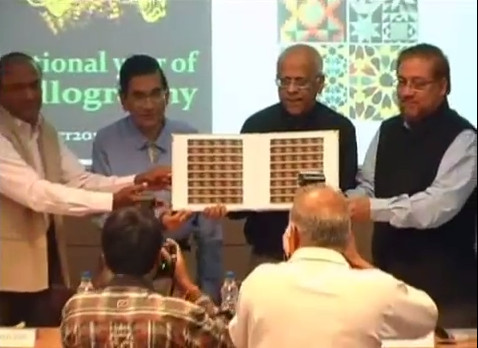 Commemorative Postage Stamp release
Commemorative Postage Stamp release How to grow a single crystal with Johanna
How to grow a single crystal with Johanna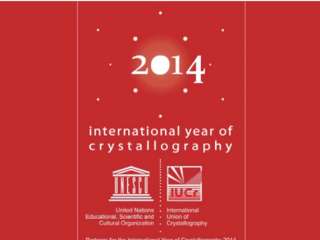 About the International Year of Crystallography
About the International Year of Crystallography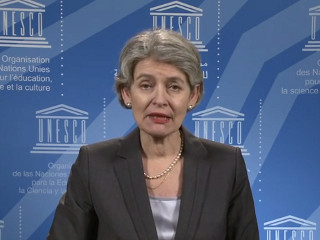 UNESCO Secretary-General introduces IYCr2014 (French)
UNESCO Secretary-General introduces IYCr2014 (French) UN Secretary General launches IYCr2014
UN Secretary General launches IYCr2014 Growing crystals: the Canberra competition
Growing crystals: the Canberra competition ¿Qué es un cristal?
¿Qué es un cristal?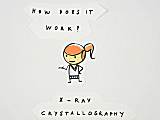 The fascinating world of crystallography - with Johanna
The fascinating world of crystallography - with Johanna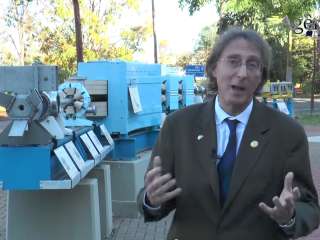 IYCr Latin American Summit meeting on Biological Crystallography and Complementary Methods
IYCr Latin American Summit meeting on Biological Crystallography and Complementary Methods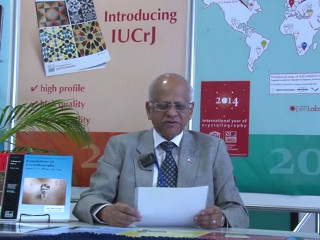 IUCr President introduces the International Year of Crystallography 2014
IUCr President introduces the International Year of Crystallography 2014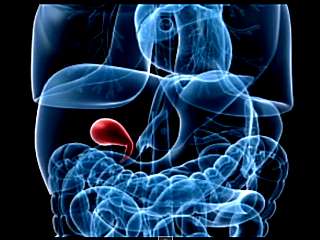 The role of crystals in human life
The role of crystals in human life Año Internacional de la cristalografía en América Latina y el Caribe
Año Internacional de la cristalografía en América Latina y el Caribe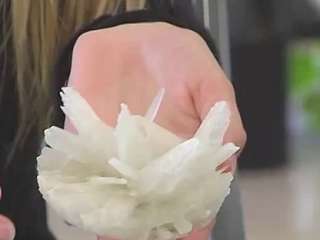 Concurso de Cristalización en la Escuela: Final 2014
Concurso de Cristalización en la Escuela: Final 2014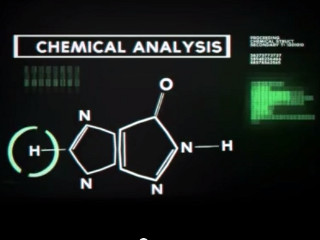 Rigaku International Year of Crystallography 2014 Sponsor Video
Rigaku International Year of Crystallography 2014 Sponsor Video BBC World News: Crystallography: 19 December 2013
BBC World News: Crystallography: 19 December 2013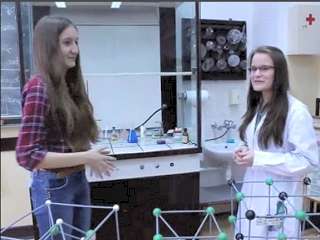 The role of crystals in human life
The role of crystals in human life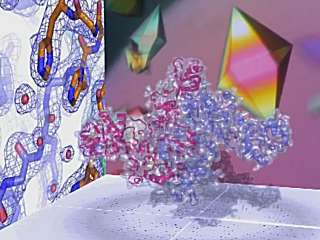 Diving into the heart of the molecules of life
Diving into the heart of the molecules of life Cristalografía de rayos X, una historia de cien años
Cristalografía de rayos X, una historia de cien años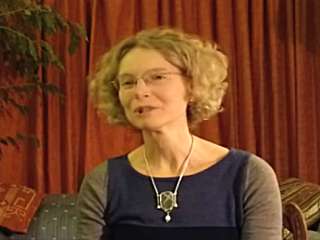 The importance of X-ray crystallography in the materials and biological sciences
The importance of X-ray crystallography in the materials and biological sciences What crystallography can do for you
What crystallography can do for you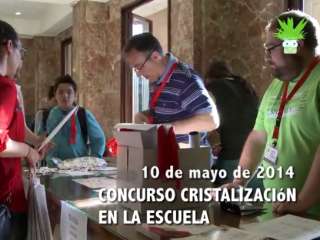 Final of the 2014 Crystallization Competition for Schools in Spain
Final of the 2014 Crystallization Competition for Schools in Spain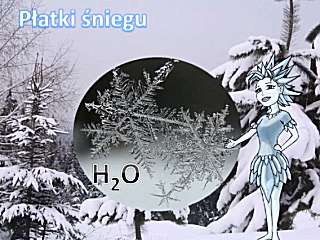 The role of crystals in human life
The role of crystals in human life![[Andy Marmery displays a laser diffraction pattern]](https://www.iycr2014.org/__data/assets/image/0003/73920/prep-room.jpg)
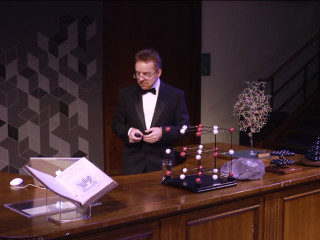 Seeing things in a different light: Friday Evening Discourse with Stephen Curry
Seeing things in a different light: Friday Evening Discourse with Stephen Curry Structure and Order. A century of symmetry with Judith Howard
Structure and Order. A century of symmetry with Judith Howard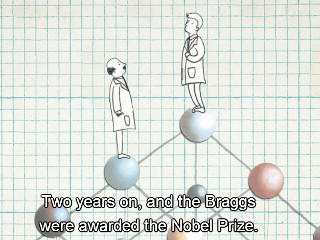 Celebrating crystallography: 100 years of crystallography
Celebrating crystallography: 100 years of crystallography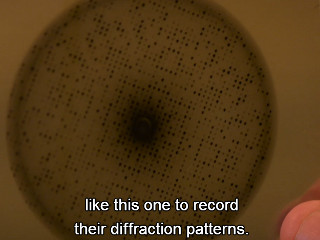 Understanding Crystallography: Part Two. From Crystal to Diamond
Understanding Crystallography: Part Two. From Crystal to Diamond Mars diffracts! An epic journey into the role of X-ray diffraction in space
Mars diffracts! An epic journey into the role of X-ray diffraction in space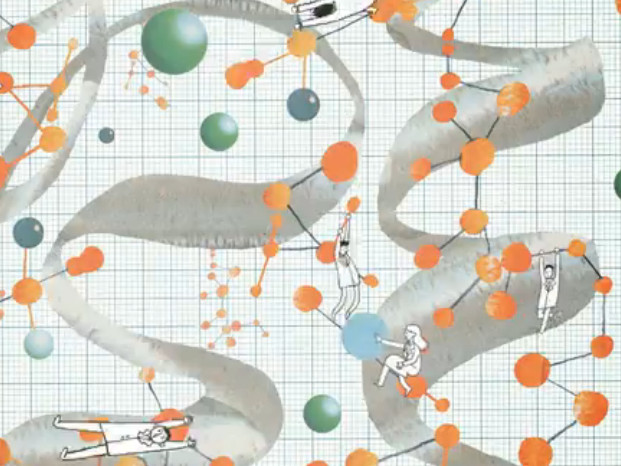 Célébrons la cristallographie! (French language version)
Célébrons la cristallographie! (French language version)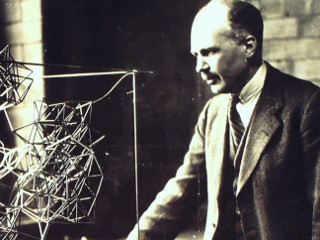 The humble Braggs and X-ray crystallography: Solving the patterns of matter
The humble Braggs and X-ray crystallography: Solving the patterns of matter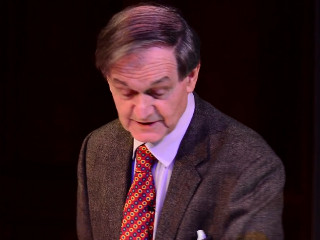 Forbidden crystal symmetry in mathematics and architecture
Forbidden crystal symmetry in mathematics and architecture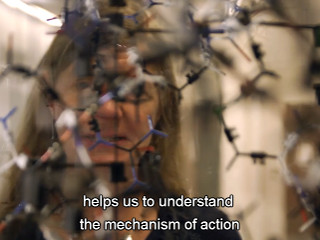 Understanding Crystallography: Part One. From protein to crystal
Understanding Crystallography: Part One. From protein to crystal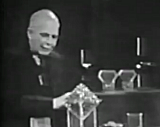 Sir Lawrence Bragg: crystals and gems
Sir Lawrence Bragg: crystals and gems![[Inside the Naica caves]](https://www.iycr2014.org/__data/assets/image/0003/102846/giant_crystals.jpg)
![[Inside the Naica caves]](https://www.iycr2014.org/__data/assets/image/0020/102881/giant_crystals2.jpg)
![[Inside the Naica caves]](https://www.iycr2014.org/__data/assets/image/0003/102882/giant_crystals3.jpg)
![[Inside the Naica caves]](https://www.iycr2014.org/__data/assets/image/0004/102883/giant_crystals4.jpg)
![[reciprocal lattice]](https://www.iycr2014.org/__data/assets/image/0008/94841/lattice.jpg)
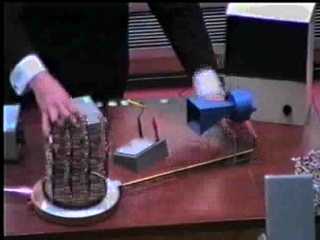 Manchester and Bragg
Manchester and Bragg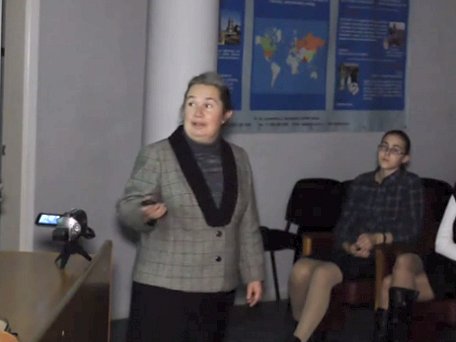 Crystals - how and why to study them (Russian)
Crystals - how and why to study them (Russian) 5th Moroccan School of Crystallography (French or English)
5th Moroccan School of Crystallography (French or English) Revolutionary Biology Part 1: the building blocks of life
Revolutionary Biology Part 1: the building blocks of life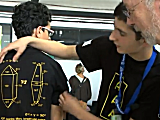 Proyecto Krystalla: school crystallization contest in Andalusia
Proyecto Krystalla: school crystallization contest in Andalusia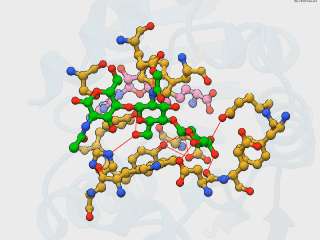 Celebrating the International Year of Crystallography with methylation of Nod Factor
Celebrating the International Year of Crystallography with methylation of Nod Factor Georgina Ferry on X-ray crystallography
Georgina Ferry on X-ray crystallography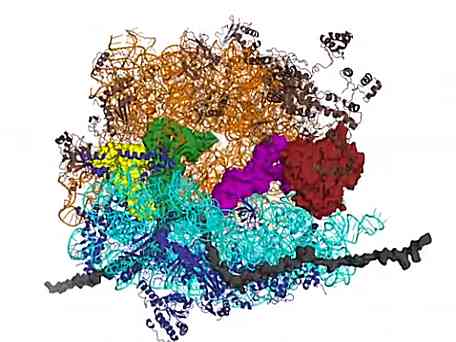 The decoding step of protein synthesis: EF-Tu delivers aminoacyl-tRNA to the ribosome
The decoding step of protein synthesis: EF-Tu delivers aminoacyl-tRNA to the ribosome A Case of Crystal Clarity: an adventure in X-ray crystallography
A Case of Crystal Clarity: an adventure in X-ray crystallography![[Crystallographers in Conference]](https://www.iycr2014.org/__data/assets/image/0011/96896/melbourne.jpg)
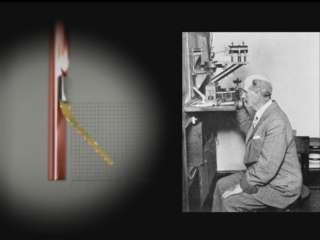 The Braggs' legacy
The Braggs' legacy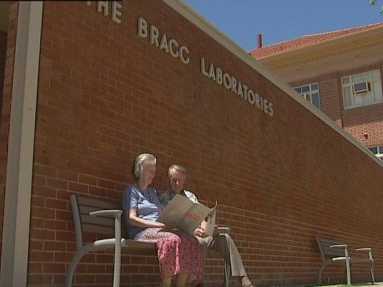 Nobel winners honoured in Adelaide
Nobel winners honoured in Adelaide Dorothy Hodgkin, Biochemist
Dorothy Hodgkin, Biochemist